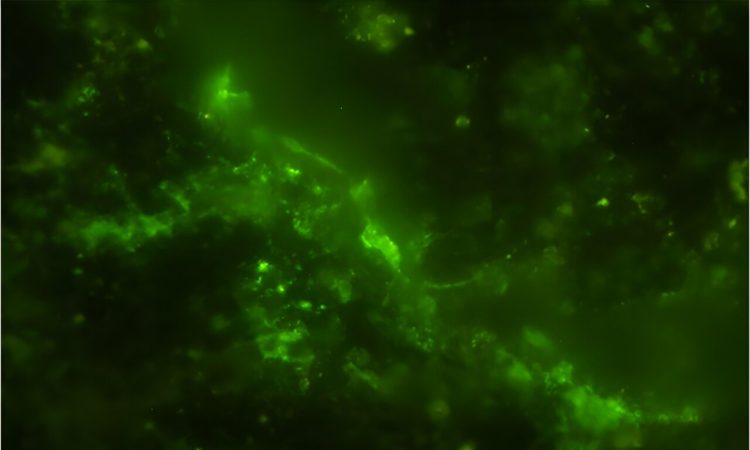
Microbes have been discovered living in a 2 billion year old rock. The rock was excavated from the Bushveld Igneous Complex in South Africa, an area known for its rich ore deposits. This is the oldest example of living microbes found in ancient rocks.
The team involved in the study built on its previous work to perfect a modality involving three types of imaging – infrared spectroscopy, electron microscopy and fluorescence microscopy – to confirm that the microbes were indigenous to the ancient core sample and were not the cause of the contamination during the sampling and study process.
The paper is published in the journal
Research into these microbes could help us better understand the very early evolution of life, as well as the search for extraterrestrial life in rock samples of the same age
Deep within the Earth lies something ancient and alive. Colonies of microbes live in rocks far below the surface, somehow managing to survive for thousands, even millions of years.
These tiny, hardy organisms seem to live at a slower pace, barely evolving over geologic time and thus giving us a chance to look back in time. Now, researchers have found living microbes in a rock sample dated to 2 billion years old.
An area known for its rich ore deposits
“We didn’t know if 2 billion-year-old rocks were habitable. Until now, the oldest geological layer in which living microorganisms had been found was a 100-million-year-old deposit under the ocean floor, so this is a very exciting discovery. By studying the DNA and genome of such microbes, very early on Earth,” said Yohey Suzuki, lead author and associate professor at the Graduate School of Science at the University of Tokyo.
The rock sample was taken from the Bushveld Igneous Complex (BIC), a rocky intrusion in northeastern South Africa that formed when magma cooled slowly beneath the Earth’s surface.
The BIC covers an area of approximately 66,000 square kilometers (about the size of Ireland), varies in thickness by up to 9 km, and contains some of the richest ore deposits on Earth, including approximately 70% of the world’s mined platinum, write
Because of the way it formed and the minimal deformation or change that has occurred since then, the BIC is thought to have provided a stable habitat for ancient microbial life to continue to this day.
The team discovered living microbial cells
With the help of the International Continental Scientific Drilling Program, a non-profit organization that funds the exploration of geological sites, the team obtained 30 centimeters long from about 15 meters underground.
The rock was cut into thin slices and analyzed, at which point the team discovered living microbial cells, densely stored in the cracks in the rock. Any space near these cracks was covered with clay, making it impossible for organisms to exit or other objects to enter.
The team relied on a technique they had previously developed to confirm that the microbes were native to the rock sample and did not arise from contamination during the drilling or examination process.
By staining the DNA of the microbial cells and using infrared spectroscopy to analyze the proteins in the microbes and the surrounding clay, the researchers were able to confirm that the microorganisms were alive and uncontaminated.

